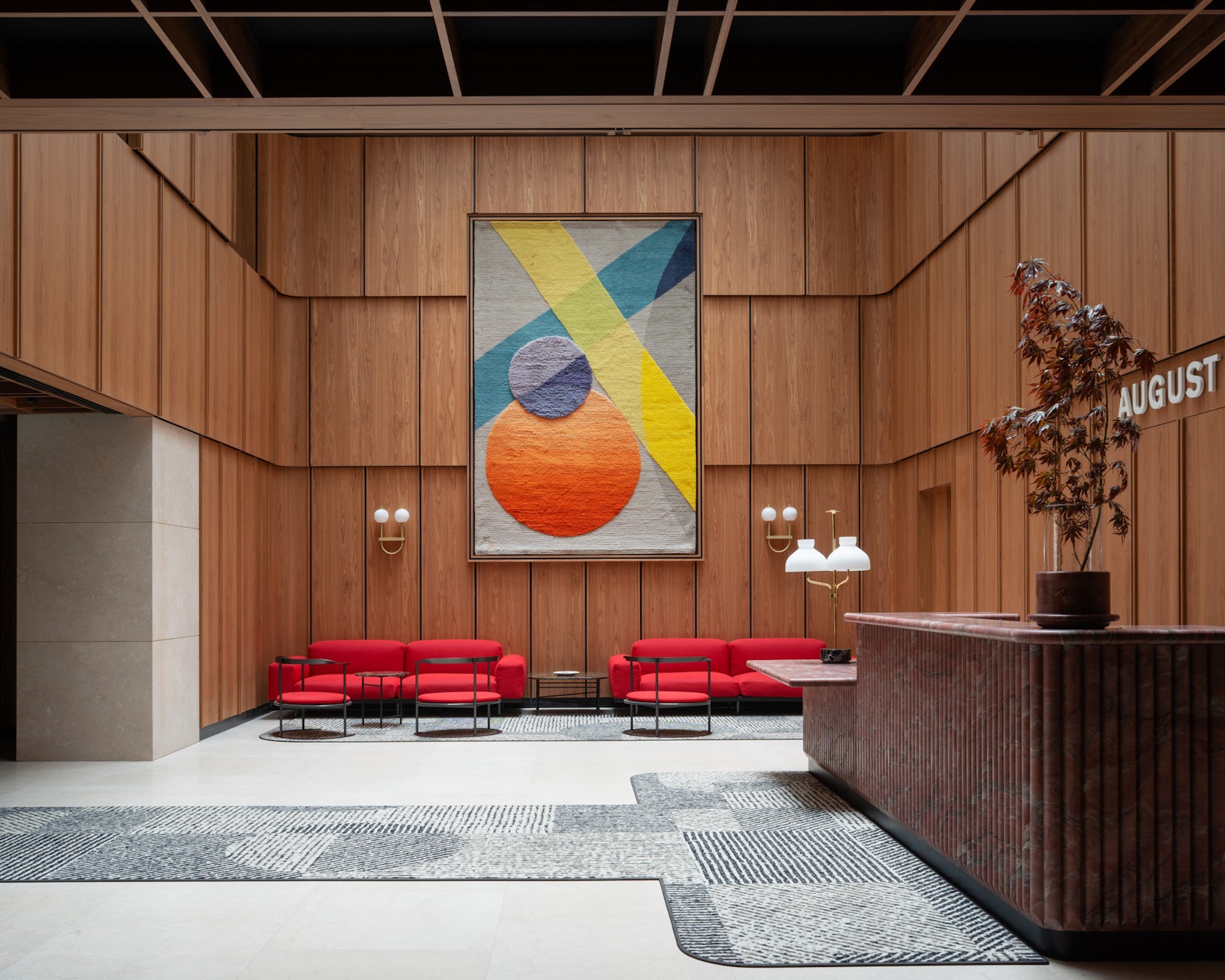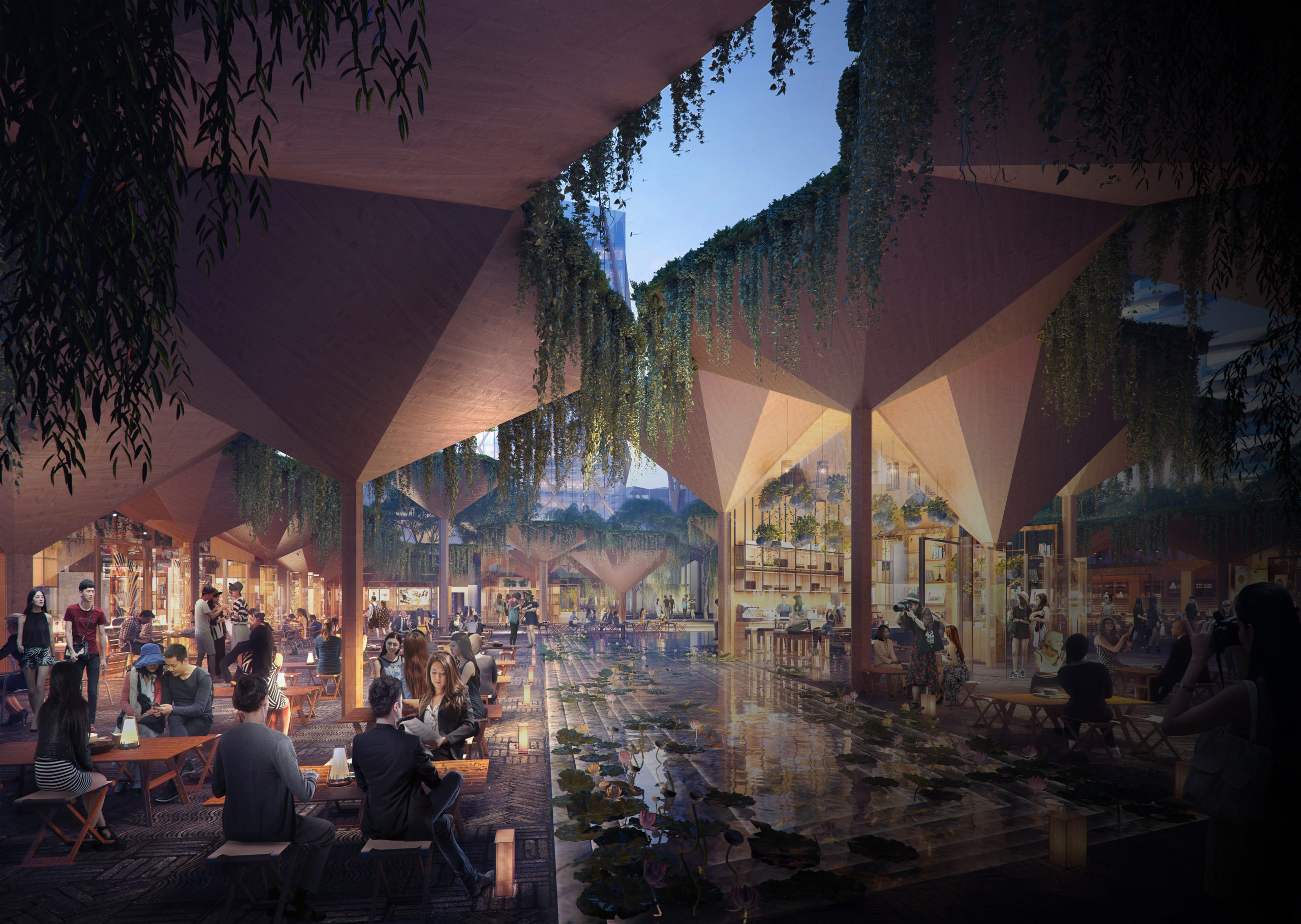August Debouzy – The client provided us with one specific wish for this project: “please make it timeless”. We looked at past examples of corporate architecture from the 1950s, 1960s but also at some of the iconic hotels of the same era like the Okura in Tokyo. Because this building sits in the heart of Paris, in a typical Haussmannian street, the transition into the space, the very first steps inside the building were critical. From a darker buffer space to a light filled, double height lobby & reception area. The material palette, the level of detailing and the selection of artworks were the pillars of our design. All of which contribute to providing the spaces with warmth and the timeless familiarity we were after.
Architizer chatted with Alireza Razavi from STUDIO RAZAVI to learn more about this project.
Architizer: What inspired the initial concept for your design?
Alireza Razavi: All our projects are part of a genealogy, they are born from previous designs & experiences. We’ve used wood paneling in many projects before and we knew this one would be a great opportunity to further explore that. The added inspiration definitely came from great midcentury corporate designs but also from past experiments from great firms to introduce carefully chosen artworks in their work spaces.

© STUDIO RAZAVI + PARTNERS
What do you believe is the most unique or ‘standout’ component of the project?
The ease with which all the materials and the scale at which they have been used, create a sensible and beautiful space. In other words, the craftsmanship
What was the greatest design challenge you faced during the project, and how did you navigate it?
Introducing artworks as fundamental components of our design posed us a challenge as the client had not necessarily envisioned that. We invested the time necessary to explain why it was such an important dimension of our design but also by showing past historical examples where art and architecture were sensibly integrated to create gorgeous spaces.

© STUDIO RAZAVI + PARTNERS
How did the context of your project — environmental, social or cultural — influence your design?
The dominant context to any urban project is the neighborhood or the street in which it sits. Ours being in an Art Deco building in a neo-classical neighborhood, it was crucial for us not to extend this impression inward. We wanted an interruption from the severe perspective, the ornate stone facades so as to create a place that would slow the pace down and offer visitors & users alike a beautiful environment.

© STUDIO RAZAVI + PARTNERS
What drove the selection of materials used in the project?
We specifically chose materials we knew were readily available, hence with very short lead times and travel distance. We also limited the selection to materials we had previously worked with and which we knew could be used along the tolerances we desired (such as a the curved wood paneling in corners). All materials & systems were sourced in Europe with the exception of the large entrance tapestry which was hand woven in Nepal.

© STUDIO RAZAVI + PARTNERS
What is your favorite detail in the project and why?
The reception desk came out great but it really is by virtue of a more general context. The wood panels, the stone floor, the ceiling system, the carpet and the furniture all contribute to celebrate the reception desk as a kind of focus piece. The overall perspective from the entrance only further enhances this.

© STUDIO RAZAVI + PARTNERS
How important was sustainability as a design criteria as you worked on this project?
Because the client had chosen to reuse the existing building cooling & heating system, our primary focus was material selection. Keeping the variety of materials down, selecting carpet brands that largely recycle their products, specifying finishes that are sources within a reasonable distance all contributed to creating a project with a limited carbon footprint. Least but not last, the quality of each work space is central to this design, making sure each office space has access to natural light and offers great acoustics.

© STUDIO RAZAVI + PARTNERS
In what ways did you collaborate with others, and how did that add value to the project?
Collaborating with engineers is part of any architect’s daily life and often times the success is measured by how fruitful their relationship was. More specifically for this project, I will point out the exchange with artists and fabricators. Conveying and extending the sensitivity of our design to others in order for them to grasp our intent and in turn produce works that echo our objective was the most fulfilling part here.

© STUDIO RAZAVI + PARTNERS
Were any parts of the project dramatically altered from conception to construction, and if so, why?
We were lucky enough that no major alterations occurred during this project!
How have your clients responded to the finished project?
The best compliment we received from our clients was that they now rather invite their clients in for lunch rather than take them out! For a firm of 300+ we take it as a sign that good design works.

© STUDIO RAZAVI + PARTNERS
What key lesson did you learn in the process of conceiving the project?
In design, invention is not a matter of re-inventing the wheel. Rather it is a process by which previous ideas (not necessarily ours) are given new layers of context & information. Slightly transformed, taken to another level of detailing of fabrication. Minor evolutions, a gradual genealogy which connects people with previous experiences, with history and ultimately with meaning.

© STUDIO RAZAVI + PARTNERS
How do you believe this project represents you or your firm as a whole?
This project is a full reflection of our ethos. The importance of craftsmanship, the necessity to address all aspects of design: from ideas to site supervision. It also underlines how architects play a central role in defining people’s daily well-being by sharing their culture which is unique in breath, from technology to history.

© STUDIO RAZAVI + PARTNERS
How do you imagine this project influencing your work in the future?
I tend to see my profession as pyramid, climbing one step at a time. Moving forward but always in keeping with the impressions developed in past projects. This project allowed us to materialize ideas that we had only thus far built at a smaller scale so we look forward to the next challenge.

© STUDIO RAZAVI + PARTNERS
Team Members
Guillen Berniolles
For more on August Debouzy, please visit the in-depth project page on Architizer.





































 222 Occo Chair
222 Occo Chair  295 Lounge chair Intra
295 Lounge chair Intra  August Debouzy
August Debouzy 


